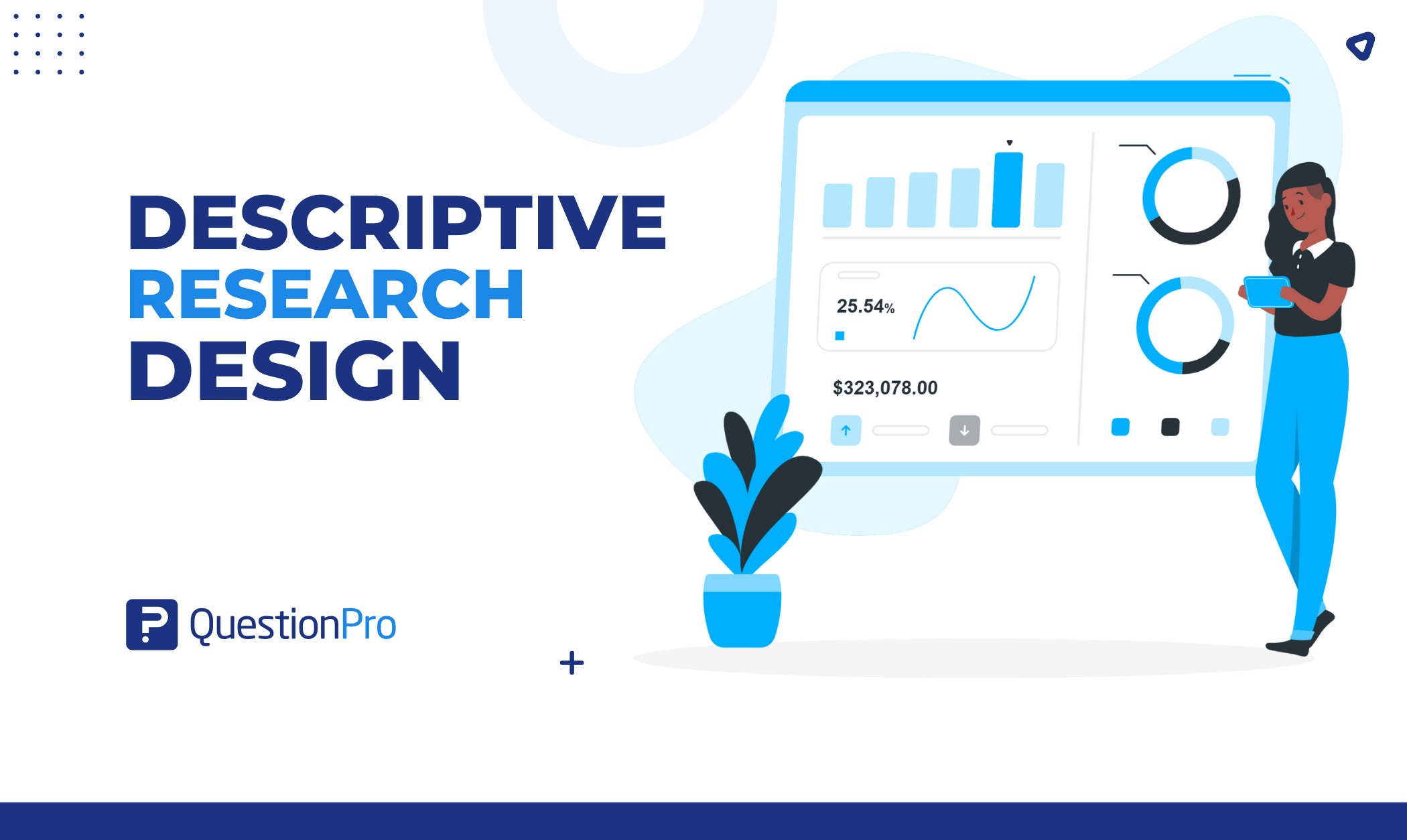Research Design: What it is, & How to Design It?
Research Design: What it is, & How to Design It?
 When conducting research, choosing the right method to gather data is crucial to getting meaningful and accurate results. One of the most effective and widely used approaches is descriptive research design. But what does it really mean, and how can you use it to collect data for your own study?
When conducting research, choosing the right method to gather data is crucial to getting meaningful and accurate results. One of the most effective and widely used approaches is descriptive research design. But what does it really mean, and how can you use it to collect data for your own study?
Imagine you’re trying to understand a specific group of people or phenomenon; perhaps you want to know how your customers feel about a new product, or you’re tracking the behavior of a target audience over time. Descriptive research is your go-to tool for capturing all the essential details and creating a clear picture of what is happening without getting lost in the complexities of why things are happening.
In this blog, we’ll explore the basics of descriptive research design, so you can collect the data that matters!
What is Descriptive Research Design?
Descriptive research design is a method used to systematically collect, analyze systematically, and present data to describe a specific population or phenomenon’s characteristics, behaviors, or patterns. It focuses on answering what rather than why by using methods like:
- Surveys
- Observations
- Case studies
This type of research is often used to identify patterns, trends, or specific attributes within a population, which can be helpful in fields like marketing, healthcare, education, and social sciences. The goal is to accurately describe the subject under study, making it easier to understand its current state and laying the groundwork for future research or decision-making.
Why is Descriptive Research Design Important?
Descriptive research design is important because it helps us understand and analyze real-world situations without making assumptions. It provides a clear idea of a subject, whether it’s customer preferences, market trends, or human behavior. Here’s why it matters:
- Gives Accurate Information: This research method collects actual data from real people, making the findings reliable and useful.
- Helps in Decision-Making: Businesses, governments, and researchers use descriptive research to make informed choices based on facts rather than guesses.
- Identifies Trends and Patterns: It helps spot changes over time, like shifts in consumer behavior or social trends, which can be useful for planning future strategies.
- Works Across Different Fields: From business and healthcare to education and social sciences, descriptive studies are used everywhere to gain valuable insights.
- Lays the Foundation for Further Research: It doesn’t explain why something happens, but it provides enough data for researchers to explore deeper causes in future studies.
In simple terms, descriptive research design helps us see the bigger picture, make better decisions, and understand the world around us with real facts!
Types of Descriptive Research Design
There are several descriptive research designs, each suited for different research goals. Here’s a simple breakdown of the main types:
1. Survey Research
Surveys are one of the most common types of descriptive research. They involve collecting data from a group of people through questionnaires or interviews. Surveys help researchers understand a large group’s opinions, behaviors, or characteristics.
For example, a company might use a survey to find out what customers think about their new product.
2. Observational Research
In this type of research, the researcher observes and records behavior or events without interfering. It can be done in natural settings (like watching how people behave in a park) or controlled environments (like a lab). Observational research is useful for studying behaviors that people might not report accurately in a survey.
3. Case Study Research
Case study research focuses on a single individual, group, or event in great detail. It provides an in-depth understanding of a specific situation. Case studies are often used in psychology, business, or education.
4. Longitudinal Research
Longitudinal research involves studying the same group of people over a long time. For example, a researcher might track the career progress of a group of graduates over 10 years. Longitudinal studies help identify patterns or changes over time.
5. Cross-Sectional Research
Unlike a longitudinal study, cross-sectional studies collect data from a particular group of people at a single point in time. It’s like taking a snapshot of a population.
6. Correlational Research
While not purely descriptive, correlational research is often grouped here because it describes the relationship between two variables. For example, a researcher might study whether there’s a link between studying hours and exam scores. However, it doesn’t prove that one variable causes the other.
Descriptive Research Methods
These methods are widely used in psychology, education, marketing, and social sciences. Let’s break down the primary descriptive research methods in a simple way:
- Surveys
Surveys are one of the most popular methods. They involve asking people questions through questionnaires or interviews. Surveys can be done online, over the phone, or in person.
- Case Studies
A case study is an in-depth look at a single person, group, or event. Researchers collect detailed information to understand a specific situation.
- Interviews
Interviews involve having one-on-one conversations with people to gather detailed information. They can be structured (with a set list of questions) or unstructured (more like a free-flowing conversation).
- Focus Groups
A focus group is a small group of people who discuss a topic while a researcher listens and takes notes. This method is often used in marketing to test new products or ideas.
- Document Analysis
This method involves studying existing records or documents to gather information. For example, a researcher might analyze school attendance records to see if the weather affects how often students miss class. Document analysis is useful because it uses existing data, saving time and effort.